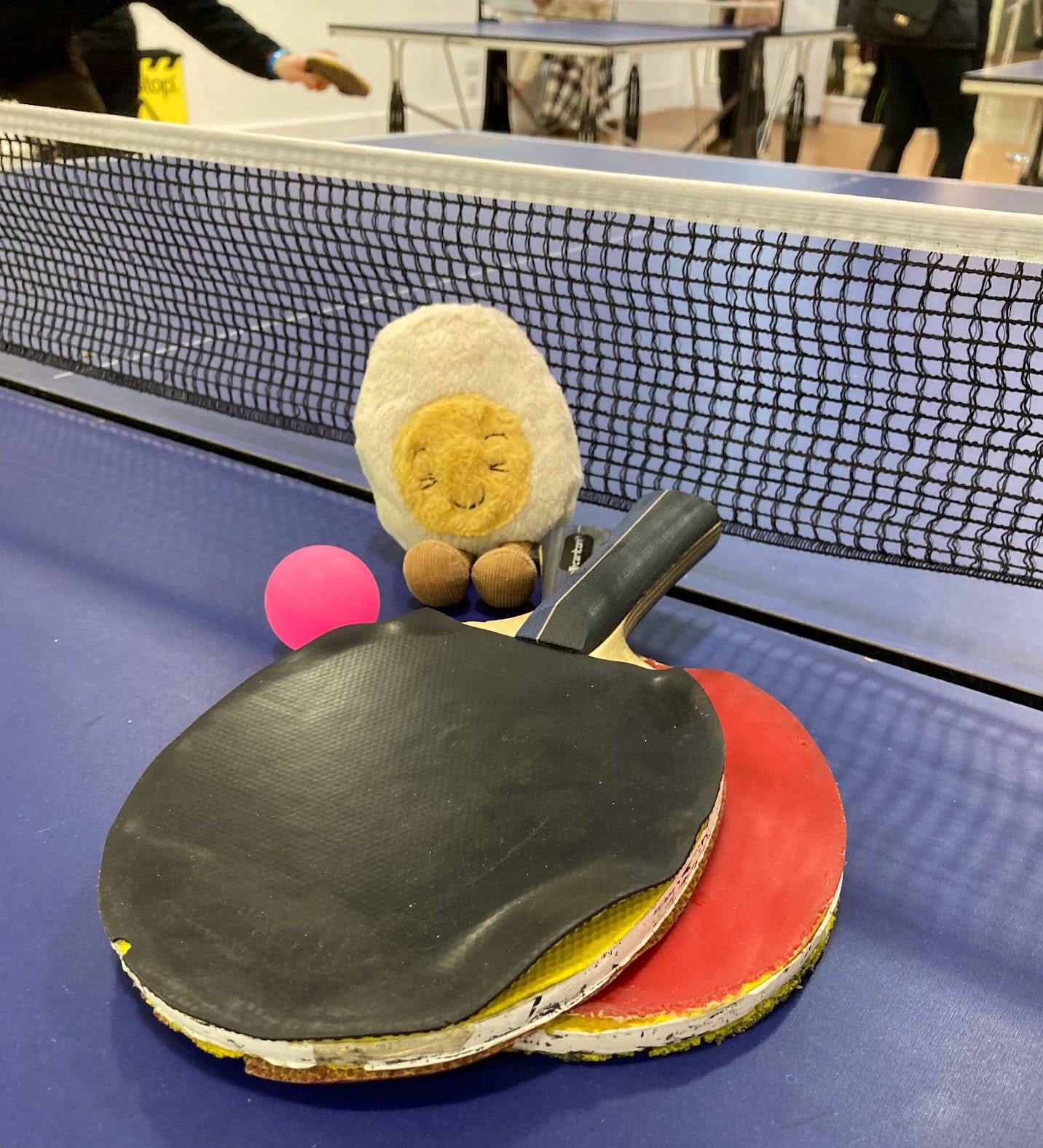Hello friends 🤗
Lots of small wins this week. Made a poster for our EDI sub-group, went to the staff Christmas party, pulled off the Secret Santa, did a job interview, made two new friends, finished this semester’s Historical Perspectives seminar series, and booked my train tickets home. Finished off with a whole day of writing, I am feeling quite pleased with the week.
📆 Activities 🛼
Monday 2 December. Shut up and Write on campus
Tuesday 3 December.
AM. Supervisor meeting with Neil
PM. Living Experiences of Disability event; CHSTM Xmas Party
Wednesday 4 December. EDI Internship interview
Thursday 5 December. Therapy; Historical Perspectives seminar
Friday 6 December. All-day writing retreat on campus
🕹️ Technoableism 🤖
First, a brief definition. Ashley Shew coined the term ‘Technoableism’ to describe the influence of ableism over what and how technologies are made to ‘fix’ disabled bodies and minds.
[Disabled people] too often become fodder in someone’s do-gooder folder and serve narratives that elevate nondisabled designers as experts and heroes for taking on the challenge we disabled people present (Shew, 2022)
For this chapter on sonic aids, I have perhaps been too charitable in my thinking. I have tried to avoid casting the whole enterprise of electronic blind mobility aids as technoableism, to give a more nuanced idea of why engineers persisted with the idea and why certain blind people have been optimisic and enthusiastic about their potentialities.
However. I find myself getting infuriated when reading about so many of these projects, especially those from the past twenty years. People never seem to learn! They keep re-making these pointless devices with little to no knowledge or experience of visual impairment, let alone methods of blind mobility or the decades of previous (failed) devices exactly like the one they are claiming will revolutionise blind travel.
Just this morning I came across instructions for building some ultrasonic spectacles on the website Instructables. Here, amateur engineers and coders can publish instructions on how to make a specific gadget. Turns out, a whole bunch of people have written up instructions for electronic blind aids. There is little difference between those self-published on the website and the start ups which get funding from formal research institutions. The latter just have more money, commercial interests, and a greater air of legitimacy.
One project stuck a cane to a roomba to create a device for blind navigation that claimed to: ‘marry the simplicity of the traditional white cane with the instincts of a seeing-eye dog’. Others were school and university assignments. Another boasted ‘no cane!’. Unsurprisingly, none had the input of visually impaired people in the design and only one claimed to have tested it on ‘a blind’.
The historian in me seeks to explain rather than to judge. But considering these attitudes and approaches have not changed over the past eighty years, I think there is some room for more cynicism in my analysis than I was allowing myself.
🧩 Entertainment 📺
📘 Finished reading The Ministry of Time. Was somewhat disappointed; I was expecting to like this a lot more than I did. It was confusing at times and could be quite slow-paced. 3.5 stars. ⭐️⭐️⭐️
🦸🏼 Finished reading the Gang of Harleys comicbook arc;
🦸🏼 Read all of Deadpool: Back in Black
📺 Finished watching Hacks
📺 Watching The Ultimatum, Silk, Designated Survivor and Piglets
🎮 Playing Zelda still - got another heart container! Took a long time solving the puzzle in the upright device shrine. Really should get back into the main quests, though.
🏓 Table tennis with Shen
🍻 CHSTM Christmas party, ft. a pub quiz




You've started me thinking about how I might spot technoableism in the early to mid-1800s, based on what was considered cutting-edge or emerging technology (or attempts at it) at the time.
Another topic for the 'someday' list.... 😁